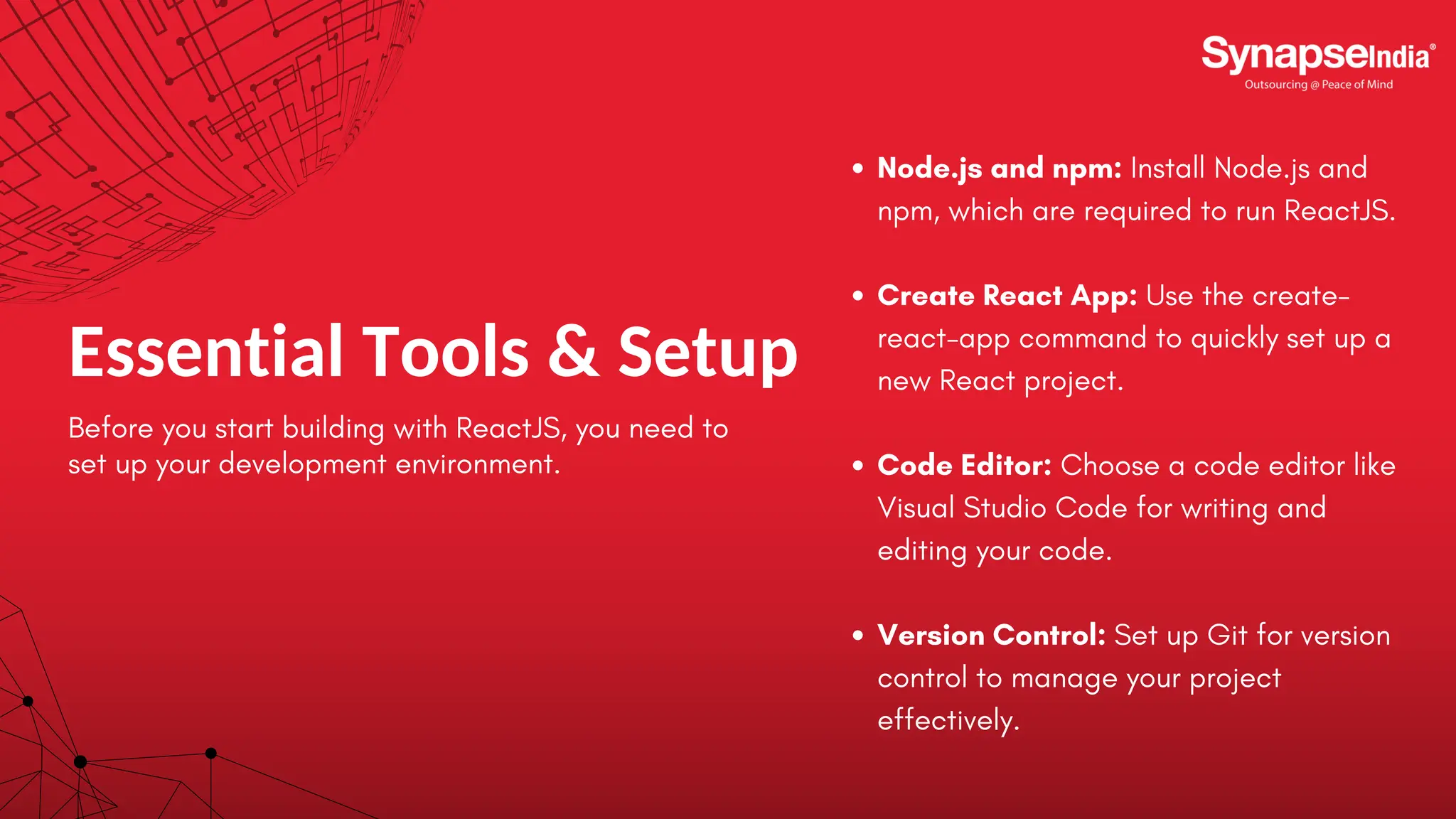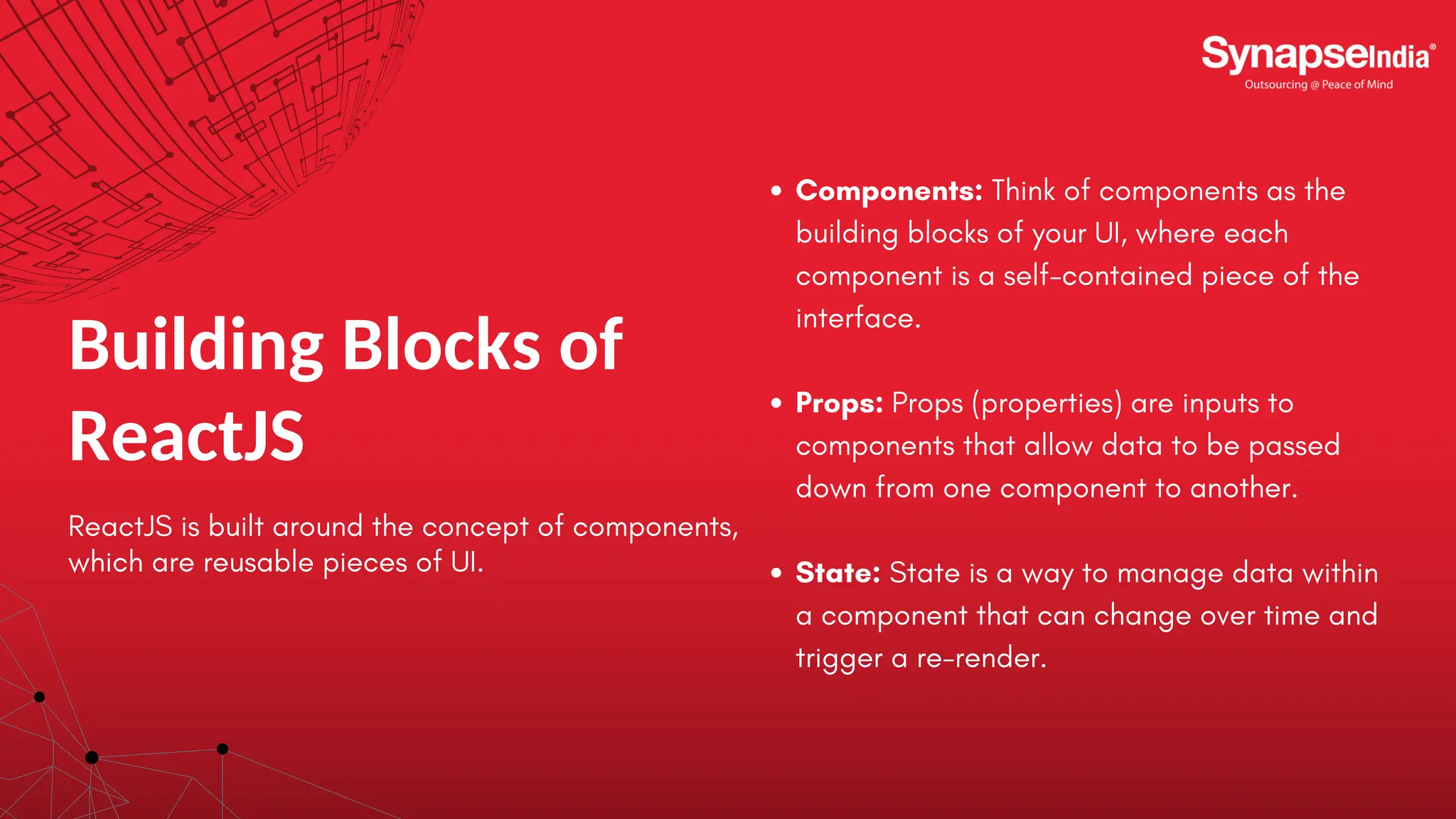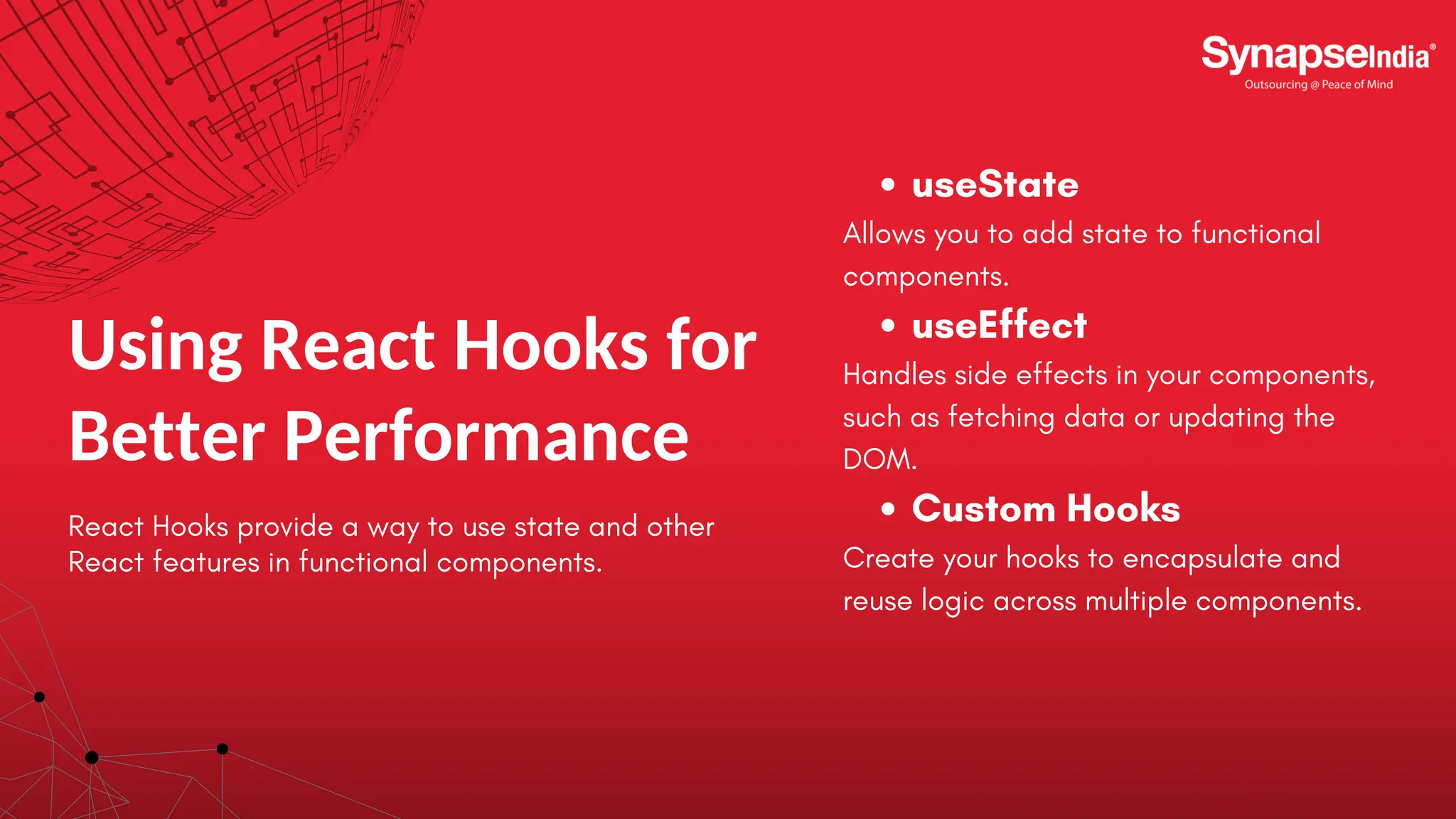This document provides a comprehensive guide to building dynamic web applications using ReactJS, emphasizing essential setup and tools such as Node.js, npm, and code editors. It details key concepts like components, props, state, React hooks, and React Router for navigation, as well as steps for deploying applications. The guide also encourages continuous learning and engagement with the ReactJS community to enhance development skills.








